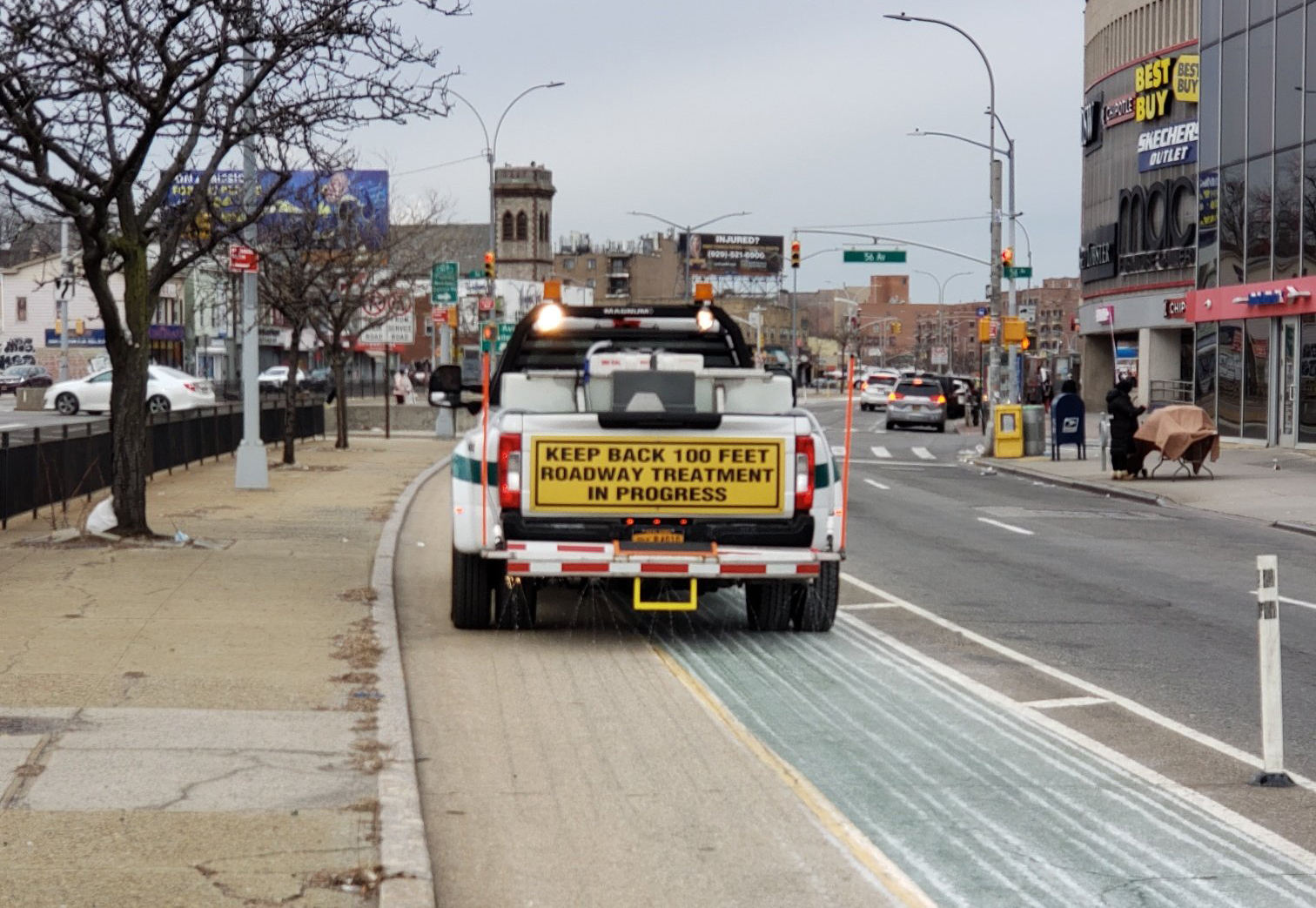As someone who regularly bikes on Queens Boulevard, I appreciate the Department of Transportation’s efforts to make the former “Boulevard of Death” even less lethal for pedestrians and cyclists, as Streetsblog reported. From the safety point of view, the existing Queens Boulevard revamp, with its lightly protected bike lane, is working: Deaths on the five-mile stretch of boulevard that hosts the bike lane, from 50th Street to Union Turnpike, which was finally finished (albeit three years late) last October, have fallen (although not to zero). Even as the dangerous road claimed 38 lives from 2003 to 2013, since the 2017 redesign there have been at least two deaths and several critical injuries.

Yet the first two phases of the Queens Boulevard “Great Streets” project, which combined will remake the eight-lane car sewer from 50th Street in Sunnyside to Eliot Avenue in Rego Park, does not go nearly far enough in satisfying the needs of cyclists or the thousands of bus riders who daily use the corridor. Even as the DOT’s engineers have sought to make Queens Boulevard safer, they have opted to keep the same number of lanes for car travel on the way-too-wide road (which the DOT even acknowledges in its own documents is essentially a highway, not a boulevard, and still a Vision Zero Priority Corridor in 2019). In other words, the department has discriminated against thousands of bikers and 13,630 pre-pandemic daily bus riders in order to privilege the needs of 40,000 daily motorists according to the state's online traffic data viewer.
The first phase, which is slated to begin in the fall, proposes moving buses onto the express lane and shifting bus stops to rebuilt medians, which should make bus service faster, even though buses still will mix with general traffic. But its bike-lane configuration, also at the median, clearly will not protect cyclists adequately, because the engineers opted for a mountable curb. Mountable means that drivers can drive onto it, which in practice guarantees that they will.
If, however, the department would reduce travel lanes on the highway from eight to four, and it's rebuilding the medians anyway, then the revamped boulevard could accommodate center-running bus lanes (which is the best practice), fully separated bikeways, and 30 percent wider sidewalks — without compromising the subway vents that are the raison d’être of the center median.
With such a configuration, there’s still room for loading zones to serve businesses, and the center median can be kept intact while the boulevard still could move 94,000 people per hour via all modes, according to a scheme for the boulevard I made with the design software Streetmix.
If we're ready to reduce travel lanes on @FixQueensBlvd from 8 to 4, and we're rebuilding medians anyway, then we can get center-running bus lanes, fully separated bikeways, & wider sidewalks - without touching the center median (subway vents).
— Samuel Santaella 🚎🤝🚲 (@TransitNinja205) February 9, 2022
(1/3)https://t.co/0f7FQ60aab pic.twitter.com/zlBtcRhidN
Bi-directional bikeways against both curbs is a design used widely in the Netherlands on very wide roads which have stores, restaurants, and other destinations on both sides. The configuration benefits regular shoppers, window shoppers, and bike-mounted delivery workers, making it easier to see what’s for sale and entice new people to stop and buy. It also makes it convenient for people entering or exiting minor side streets which lack crosswalks to the other side of the large boulevard.
Such a design would go a long way toward solving the issues that have emerged on the section of the boulevard that the DOT has completed. Riding from Yellowstone Boulevard to Woodhaven Boulevard between 2016 and 2019, I have found that even the painted bike lane, protected by mere flexible plastic posts each about a car length apart, doesn’t protect me enough from drivers, whether that’s on the slip lanes (the gaps that allow drivers to switch between the boulevard’s express and local lanes), illegal parking on the bike lane itself, or double parking in the curbside travel lanes that force other drivers to invade the bike lane in order to continue.
Moreover, bus riders have received few benefits. The Q60 bus, which plies the entire length of the boulevard, is confined to the local lanes, which mean bus drivers frequently encounter double-parked vehicles and so must veer into the bike lane in order to continue, too!
With the climate, traffic violence, and inequality crises, the DOT should take pains to ensure that whatever it makes permanent through capital projects not only meets people’s needs today, but also those of the future. Part of that is to stop discriminating in favor of motorists and against bus riders and cyclists (who are better adapted to the urban environment). Queens commuters look forward to a proposal that does that.
Samuel Santaella lives in southeast Queens and volunteers for Riders Alliance, Transportation Alternatives and the Bus Turnaround Coalition. Follow him on Twitter at @transitninja205.






